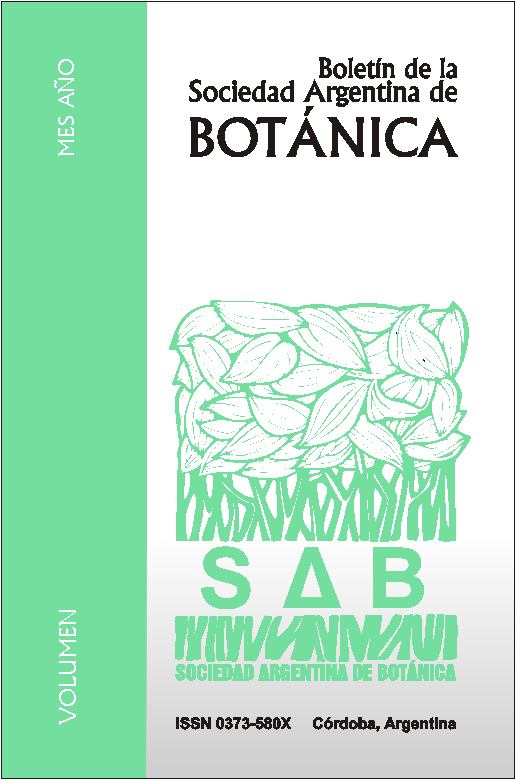Reproductive system of Trichloris (Poaceae, Chloridoideae, Chlorideae).
DOI:
https://doi.org/10.31055/1851.2372.v51.n1.14421Keywords:
Trichloris, Reproductive success, Self-pollination, Fruit weight.Abstract
Reproductive system of Trichloris (Poaceae, Chloridoideae, Chlorideae). Trichloris crinita and T. pluriflora are important native forage species with the potential to be domesticated and introduced to cultivation, but there is scarce basic information on their reproductive biology. The aim of this work was to determine the reproductive system of both plant species in populations coming from north-central Argentina. The following was proposed: 1) determine the reproductive system through the fruit/flower ratio under controlled pollination, 2) quantify the weight of the fruits produced by population under different treatments and 3) confirm or discard the presence of apomixis through embryological observations. In T. crinita, the average fruit/flower ratio was 92.4 ± 6.6%, while in T. pluriflora, it was 70.7 ± 9.9%. These results are consistent with self-compatible species, preferably self-pollinated ones. Embryo sac development indicates sexual origin of seeds in both species. Significant differences in the average weight of one hundred fruits among populations and treatments, in both species, were found. The fruits were lighter in self-pollination. The information presented is a contribution to the tasks of selection and introduction to the culture of both species as well as to the conservation and regeneration of the collected germplasm.Downloads
Published
Issue
Section
License
Provides immediate and free OPEN ACCESS to its content under the principle of making research freely available to the public, which fosters a greater exchange of global knowledge, allowing authors to maintain their copyright without restrictions.
Material published in Bol. Soc. Argent. Bot. is distributed under a Creative Commons Attribution-NonCommercial-ShareAlike 4.0 International license.





